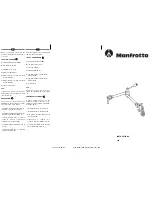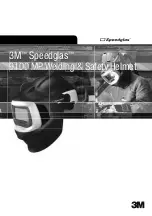
5-30
RedMAX Administration and Maintenance Guide
Redline Communications Inc. Confidential and Proprietary
your wireless link is stable, and you are still experiencing wireless CRC errors, then there
is a high probability that they are caused by interference. See “Gauging Link Performance”
on page 5-24 to verify that your link is stable.
Wireless interference is generally observed in the signal quality statistics for a given
subscriber unit. Assuming no interference, the relationship between signal quality and
signal strength is predictable. The chart below provides a range of signal strengths, along
with the minimum signal quality that should be expected for each signal level.
Field results may vary slightly as a result of channel size and individual radio calibration
differences. In general however, if you experience signal quality levels below those listed
in the following table, wireless interference is the likely cause.
Isolating the Source of the Interference
After identifying the presence of interference, the next step is to isolate the source. The
location of any reported CRC errors can help isolate the source of the problem.
If you are observing a high rate of CRC errors in the uplink, then the interference is most
likely affecting the sector controller's uplink reception.
Similarly, if the CRC errors are seen in the downlink, then the interference is most likely
affecting subscriber unit reception. Identifying those subscriber units that are specifically
experiencing higher rates of CRC errors can often help identify the source of the
interference.
Excessive subscriber unit de-registrations may also indicate wireless interference.
Normally you would expect RF interference to be observed in one of the available RF
statistics. For example, a change in RSSI, a reduction in CINR/SNR or a higher than
normal rate of wireless errors are all possible indicators of RF interference. Review the RF
statistics on the sector controller's SS Info page. The page is updated continuously so you
can look for changes. See “Monitoring Statistical Results Screens” on page 2-8.
Depending on the nature of the interference, it is not always possible to determine its
impact in the reported RF statistics. Signal quality (i.e. CINR in the uplink and SNR in the
downlink) is the metric typically used to gauge link stability. However due to the fact that it
is generally an averaged value, as well as the fact that it is periodically sampled as
opposed to continuously measured, there are situations where it can report misleading
signal quality. You may be able to see the effects by monitoring the signal noise level. See
“Viewing Noise Level Measurements” on page 5-32.
Table 5-9
RF Signal Quality Reference Values
RSSI (dBm)
Minimum DL SNR
Minimum UL CINR
-85
12
12
-80
17
13
-75
20
17
-70
24
21
-65
26
23
















































